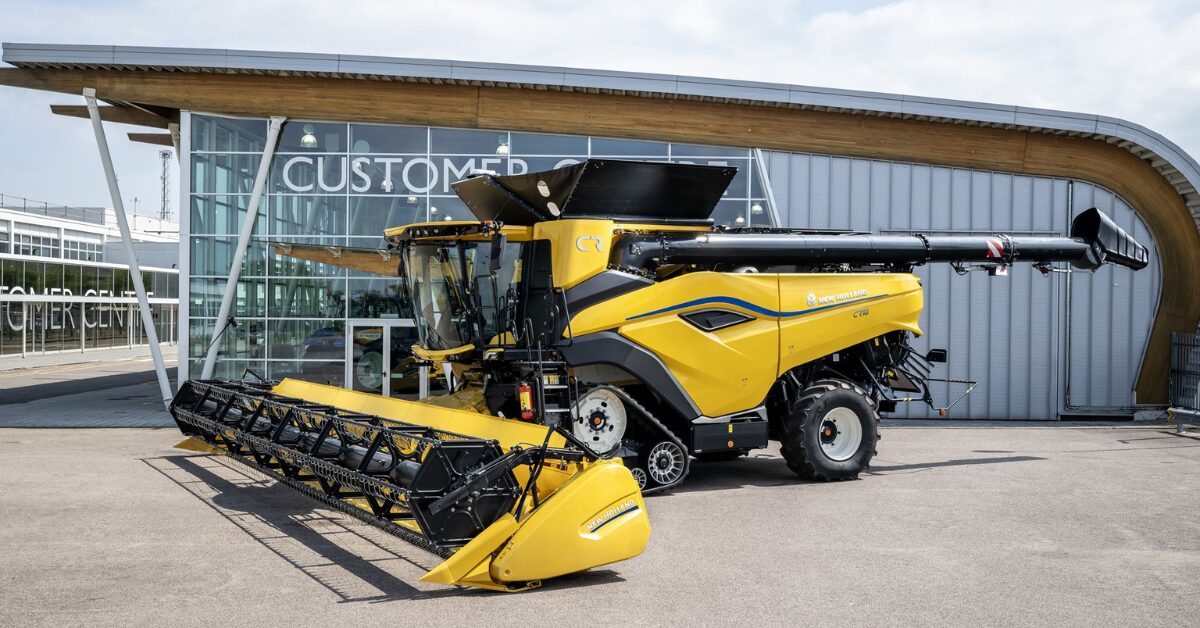Prices, Performance Insights, and Expert Buying Guide for Farmers and Contractors
The year 2025 marks a pivotal moment for agricultural equipment buyers across the USA, UK, Canada, and Australia. With rising demands on efficiency, sustainability, and connectivity, modern farmers and contractors seek machinery that delivers robust performance, fuel savings, and adaptability across diverse terrains and climates. Against this backdrop, Zoomlion tractors, known for robust engineering and affordability, and New Holland combine harvesters, celebrated for harvesting precision and automation, emerge as compelling options. This guide offers a deep dive into their 2025 offerings, providing price benchmarks, performance data, and practical advice to help English-speaking farmers and contractors make informed purchasing decisions.
Overview of Zoomlion Tractors in 2025
Zoomlion’s 2025 tractor lineup underscores significant strides in technological integration, engine power, durability, and operator comfort. By embedding telematics and GPS-based auto-steering, Zoomlion enhances field mapping and real-time data monitoring, critical in modern precision farming. Power outputs now span 75 to 250 horsepower, thanks to upgraded common-rail diesel engines that meet stricter emission standards while retaining fuel efficiency. Structural reinforcements and improved hydraulic systems ensure these tractors endure rigorous workloads year-round. Inside the cabin, features such as upgraded climate control, ergonomic seating, and noise-dampened environments reflect Zoomlion’s commitment to operator well-being, a feature particularly valued by contractors logging long hours during planting or harvest season.
Overview of New Holland Combine Harvesters in 2025
In 2025, New Holland’s combine harvesters elevate harvesting efficiency, fuel economy, and automation to new heights. Refinements to the iconic Twin Rotor and CR Series machines include wider headers with intelligent auto-adjustment for crop density and terrain variability, reducing grain loss and improving throughput. Engine improvements support lower CO₂ emissions while maintaining higher torque at lower RPMs, boosting fuel economy during extended operations. Advanced features such as auto-grain flow optimization and yield mapping, paired with semi-autonomous steering, allow operators to focus on monitoring performance rather than manually adjusting controls, particularly beneficial during peak harvest periods.
Pricing in USD, GBP, CAD, and AUD
Regional pricing reflects local market conditions, including import tariffs, dealer margins, and incentive programs.
In the U.S., a mid-range Zoomlion tractor hovers around $55,000 USD, with high-end models exceeding $85,000 USD depending on specifications. Entry-level units may be available near $45,000 through package deals or finance incentives. Meanwhile, a New Holland mid-size CR Series combine often starts at approximately $325,000 USD, with larger Twin Rotor machines reaching $500,000+ USD in fully equipped forms.
In the UK, after import duties and VAT, a similarly specced Zoomlion could cost around £43,000, and a CR combine roughly £250,000, with top spec versions pushing toward £380,000.
In Canada, Zoomlion tractors convert to roughly $70,000 CAD for mid-tier models, while New Holland combines sit in the $420,000 CAD range, depending on header size and automation packages.
In Australia, a mid-range Zoomlion tractor may retail near $90,000 AUD, with New Holland harvesters starting around $520,000 AUD, modest fluctuations occur based on freight and dealer setup fees.
Performance Metrics and Field Tests
When assessing horsepower, torque, and fuel consumption, actual field use provides the clearest picture. In Texas, a contractor managing 1,500 acres reported that a Zoomlion 200-hp tractor delivered consistent 8–10 gal/hour during tillage and planting, enabling completion of large stretches of land before dawn. In contrast, a grain farmer in Saskatchewan, preparing for harvest season, valued the Zoomlion’s later-season cold starts and durable hydraulic systems, but noted that winter fuel economy dipped slightly versus European models, a trade-off for robust reliability.
New Holland combines, when evaluated in Australian wheat fields, achieved 12–15% greater throughput per hour compared to older machines, while consuming 10–12% less fuel thanks to torque-optimized engines and advanced residue management systems. Harvest speed and quality gains translated directly into narrowing the window between flag leaf and senescence, critical during tight harvesting windows. A small-scale UK arable farmer switching from an older self-propelled combine found that the new model’s auto-adjust header and yield mapping tools allowed for smoother workflow and better post-harvest planning.
Maintenance, Warranty, and After-Sales Service
Reliability matters just as much as performance. Zoomlion maintains a growing dealer network across Canada and the U.S., offering two-year warranties on engines and transmissions and a strong spare-parts chain via regional warehouses, essential in peak season. In the UK and Australia, authorized service centers often bundle preventive maintenance packages, including seasonal calibration and filter replacement, which help preserve resale value.
New Holland’s dealer infrastructure is well-established in all four countries. Typically offering three-year/3,000-hour base warranties (extendable with service agreements), these combine harvesters benefit from manufacturer-backed training programs for operators and technicians, ensuring optimal performance during high-pressure harvest periods. Availability of OEM parts is generally robust, but during regional harvest peaks (such as Saskatchewan’s late summer rush or Australia’s spring wheat season), proactive parts ordering and early servicing greatly reduce downtime.
Financing and Resale Value
Financing options vary by region. In the USA and Canada, farm equipment lenders and manufacturer-backed leasing agreements frequently offer 0–2% APR over four to six years, with seasonal flexible payment structures aligned to harvest income cycles. In the UK, agricultural contractor financing through equipment leasing (fixed-rate hire purchase) provides firms with stable cash flow and predictable payments, often backed by government support schemes. In Australia, seasonal hire purchase or Chattel Mortgage products are common, with options to refinance or upgrade after three to four years.
Resale value is central to long-term cost-effectiveness. Zoomlion tractors retain approximately 50–60% of their original value after three to four years under normal use, especially when maintenance records are comprehensive. New Holland combines hold between 60–70%, particularly models with premium automation packages. Regions with high demand for used harvesters, such as the Canadian Prairies or the Australian wheat belt, observe higher resale prices due to ongoing demand. For contractors and farmers alike, this makes investing slightly more upfront (e.g. adding automation) often pay dividends in asset liquidity down the line.
Case Studies & Buyer Experiences
Across diverse farming environments, real-world gains illustrate the practical benefits:
On the Australian wheat belt, a farmer upgraded from a 2018 model to a 2025 New Holland CR combine and saw harvesting time drop by 20%, thanks to improved header automation and grain-flow sensors. Better fuel economy and reduced unloading interruptions also lowered harvest costs, allowing him to finish operations before the onset of wind-driven losses.
In the Canadian Prairies, a ranching contractor who switched to a Zoomlion 240-horsepower tractor found that enhanced hydraulic response and stability during heavy baling permitted him to reduce fuel consumption by 15% and complete work in fewer passes, saving both time and diesel during peak hay season.
These micro-scenarios reinforce a broader truth: tailored machinery, whether tractor or combine, becomes a powerful tool only when its technology, support, and financing align with regional realities and business models.
For large-scale contractors in Texas or Saskatchewan, Zoomlion tractors offer rugged horsepower, strong dealer support, and attractive resale, especially under tight seasonal windows. New Holland harvesters, with their advanced automation and fuel efficiency, are standout performers for grain farmers across Australia, the UK, and Canada. Those weighing value retention, ease of financing, and maintenance networks will find both brands compelling, but must align specific configurations with their field size, crop types, and operational rhythms. By doing so, buyers in 2025 can harvest not just grain, but long-term productivity gains and financial resilience.
Expanding Beyond Equipment: Digital Services for Modern Contractors
While investing in machinery like Zoomlion tractors or New Holland combine harvesters is critical for productivity, many farmers and contractors in 2025 also recognize the importance of building a strong digital presence. Marketing agricultural services, connecting with buyers, or even promoting contracting businesses often requires more than word-of-mouth. That’s where platforms like ShopInHome come in. As a global marketplace for freelancers and digital service providers, ShopInHome allows farmers, equipment dealers, and contractors to access professionals offering services such as advertising on LinkedIn, Telegram campaigns, SEO management, and other digital marketing solutions. Just as modern machinery increases efficiency in the field, ShopInHome helps businesses expand their reach and secure more clients online.
FAQs
- What’s the fuel efficiency of Zoomlion tractors in Canadian winters?
Cooler temperatures typically increase diesel viscosity, slightly reducing fuel efficiency. Expect about 5–8% higher fuel use compared to warmer seasons, but proper winter grades and pre-run warm-up routines mitigate this. - Are New Holland harvesters suitable for small-scale UK farms?
Yes, especially the mid-size CR Series models. Their automation features (e.g. yield mapping and auto-header adjustment) offer precision advantages even on small acreage. - How long is the standard warranty on New Holland combines in Australia?
Typically three years or 3,000 operating hours, and often extendable with service agreements. - Can I finance Zoomlion tractors through government schemes in the UK?
Many UK leasing providers offer equipment hire purchase backed by agricultural support programs. These may reduce interest rates or deposit requirements, check eligibility locally. - What’s the average resale value of a 2022 New Holland combine in Canada today?
Generally around 60–70% of its original cost, depending on specs and condition. - Do Zoomlion dealers stock parts year-round in the U.S.?
Yes, major dealers maintain inventories throughout the year, though peak-demand components like hydraulic pumps may require early ordering during planting or harvest seasons. - How does header automation on New Holland models improve harvest?
Auto-adjust headers adapt in real-time to crop density and ground contours, reducing grain loss and operator fatigue, enhancing overall harvest speed and quality. - Are telematics standard on 2025 Zoomlion tractors?
Most mid and high-tier models now include telematics. Entry-level units may offer it as an optional upgrade. - What financing terms are typical for Canadian farmers buying these machines?
Four- to six-year terms at 0–2% APR, often structured with payments aligned to harvest revenue flows. - How durable are Zoomlion tractors under heavy contractor use?
With reinforced frames and heavy-duty hydraulics, they’re designed for demanding, multi-shift operations, especially when paired with proper preventive maintenance. - Do New Holland combines come with operator training in the UK?
Yes, dealers frequently include training sessions covering machine calibration, auto-steer, and yield mapping as part of the sales package. - What’s the fuel consumption difference between a 2025 combine and older models?
Depending on the specific model and crop conditions, fuel use can be 10–15% lower in modern combines equipped with torque-efficient engines and residue management. - Is there dealer overlap for Zoomlion and New Holland in rural Australia?
They typically maintain separate networks, though some multi-brand dealers may represent both, especially in more populous farming regions. - How do maintenance packages influence resale value?
Regular manufacturer-endorsed servicing and documented preventive work can improve resale retention by up to 10 percentage points. - Can a contractor switch from a 2018 model to a 2025 and see uptime improvement?
Absolutely, newer models with improved hydraulic performance, telematics, and automated features reduce downtime, yielding faster field turnover and lower operating costs.


